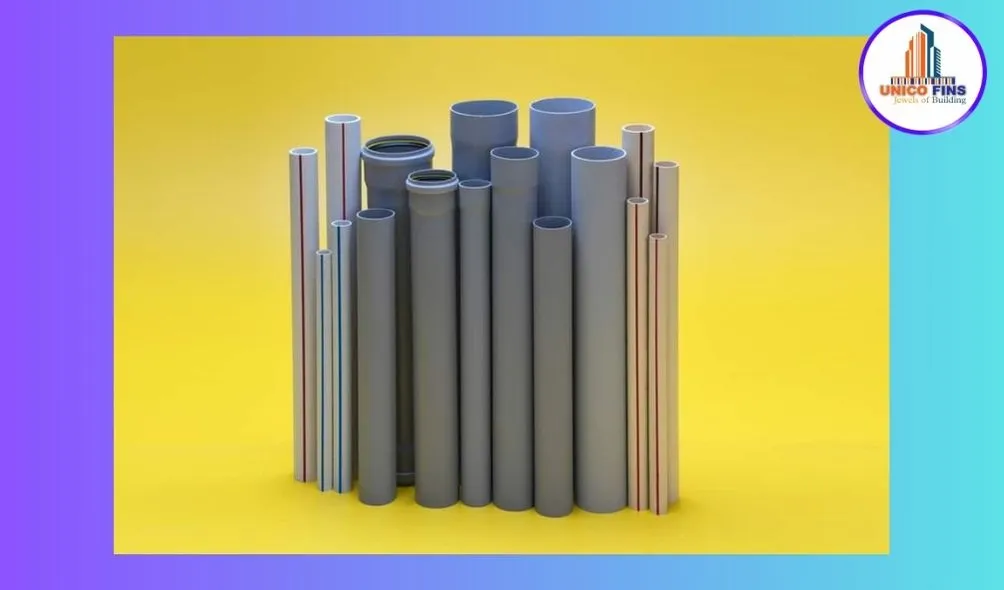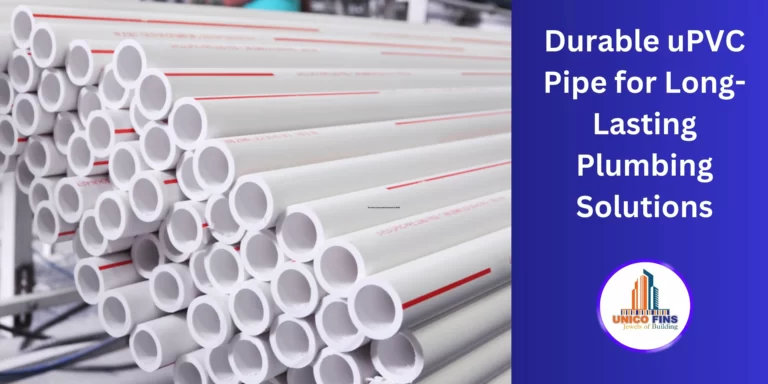When it comes to choosing the right piping material for your plumbing and construction projects, the options can seem overwhelming. Two commonly used materials for pipes are uPVC pipe (unplasticized polyvinyl chloride) and PVC (polyvinyl chloride). While these acronyms may sound similar, they represent distinct pipe materials with different properties and applications.
In this comprehensive guide, we’ll delve into the differences between uPVC pipe and PVC pipes, helping you make an informed decision on which material is best suited for your specific needs. Whether you’re a DIY enthusiast, a plumbing professional, or a construction expert, understanding the disparities between these two materials is crucial.

Understanding PVC Pipes
What Is PVC?
PVC, or polyvinyl chloride, is a widely used plastic material known for its versatility and cost-effectiveness. PVC pipes are made from a flexible, plasticized PVC compound. They are renowned for their durability, chemical resistance, and ease of installation. PVC pipes are commonly used in a variety of applications, including water supply, drainage systems, irrigation, and electrical conduit.
Advantages of PVC Pipes
- Cost-Effective: PVC pipes are often more affordable than alternative materials, making them a budget-friendly choice.
- Corrosion Resistance: PVC pipes are highly resistant to corrosion, ensuring a longer lifespan and minimal maintenance.
- Lightweight: These pipes are lightweight and easy to handle, making installation a breeze.
- Chemical Resistance: PVC pipes can withstand exposure to various chemicals, making them suitable for industrial applications.
- Smooth Interior: Their smooth interior surface allows for efficient water flow and reduced friction.
Limitations of PVC Pipes
- Temperature Sensitivity: PVC pipes can become brittle at very low temperatures and may warp at high temperatures.
- Not UV-Resistant: They are vulnerable to UV degradation, which restricts their outdoor applications.
Exploring uPVC Pipes
What Is uPVC?
uPVC, or unplasticized polyvinyl chloride, is a modified version of PVC. The “unplasticized” nature of uPVC means that it doesn’t contain the plasticizers found in PVC, making it a more rigid and durable material. uPVC pipes are primarily used for plumbing and water supply systems.
Advantages of uPVC Pipes
- Durability: uPVC pipes are known for their long-term durability and resistance to impact and abrasion.
- Chemical Resistance: Similar to PVC, uPVC pipes can handle a wide range of chemicals, ensuring a reliable performance in industrial settings.
- Low Maintenance: They require minimal maintenance and have a longer service life.
- Smooth Interior: uPVC pipes offer excellent flow characteristics with their smooth interior surface.
- UV-Resistant: Unlike PVC, uPVC pipes are UV-resistant, making them suitable for outdoor applications.
Limitations of uPVC Pipes
- Cost: uPVC pipes are generally more expensive than standard PVC pipes.
- Not Suitable for High Temperatures: They have limitations in handling high-temperature water.
Key Differences Between uPVC and PVC Pipes

Material Composition
The fundamental difference between uPVC and PVC pipes lies in their material composition. PVC pipes contain plasticizers, which make them more flexible but also prone to UV damage. uPVC pipes, on the other hand, are rigid and lack these plasticizers, enhancing their durability and UV resistance.
Applications
- PVC: PVC pipes are suitable for a wide range of applications, including water supply, drainage, and irrigation. However, they are not ideal for outdoor use due to their vulnerability to UV rays.
- uPVC: uPVC pipes excel in plumbing and water supply systems. Their UV resistance makes them an excellent choice for outdoor installations.
Cost
PVC pipes are generally more cost-effective than uPVC pipes. If budget considerations are a priority, PVC may be the preferred choice.
Durability
uPVC pipes are the winners in terms of durability. Their resistance to impact, abrasion, and UV rays ensures a longer service life compared to standard PVC pipes.
Temperature Tolerance
PVC pipes are sensitive to extreme temperatures and may become brittle in cold conditions. uPVC pipes handle temperature variations better, making them suitable for various climates.
Choosing the Right Pipe Material
The choice between uPVC and PVC pipes ultimately depends on your specific project requirements. Here are some factors to consider when making your decision:
- Application: Determine the primary purpose of the pipes. For indoor plumbing, uPVC is often the superior choice, while PVC may suffice for drainage systems.
- Budget: Consider your budget constraints, as PVC pipes are typically more affordable.
- Environmental Factors: If your project involves outdoor installations or exposure to UV rays, uPVC’s UV resistance becomes an essential feature.
- Climate: Evaluate the climate conditions in your region. If temperature extremes are a concern, uPVC’s durability in various temperatures is advantageous.
Conclusion
In the uPVC vs. PVC battle, both materials have their strengths and weaknesses. The right choice depends on your project’s specific needs. PVC pipes are versatile and budget-friendly, while uPVC pipes excel in durability and UV resistance. By considering your application, budget, and environmental factors, you can make an informed decision on which pipe material is right for you.
When embarking on your plumbing or construction project, make sure to weigh the advantages and limitations of uPVC and PVC pipes, ensuring that your investment aligns with your objectives. Whether it’s PVC or uPVC, both materials have a valuable place in the world of pipes, offering reliable solutions for a wide range of applications.



